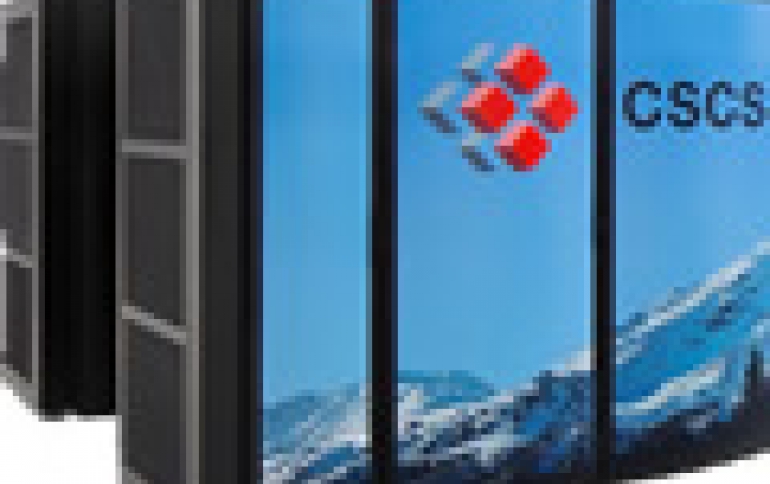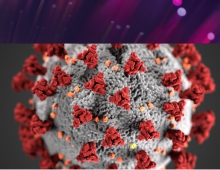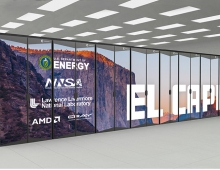
US Edged Out of Third Place In latest Supercomputer Ranking
The 49th edition of the TOP500 list was released today, and although there were no new entrants in the top 10 places of the list, GPU-based systems are emerging as strong players in the market.
According to the latest list, which ranks the world's most powerful supercomputers based on the Linpack benchmark and is released twice per year, the Sunway TaihuLight, a system developed by China's National Research Center of Parallel Computer Engineering & Technology (NRCPC) and installed at the National Supercomputing Center in Wuxi, maintains its top position. With a Linpack performance of 93 petaflops, TaihuLight is far and away the most powerful number-cruncher on the planet.
Tianhe-2, (Milky Way-2), a system developed by China's National University of Defense Technology (NUDT) and deployed at the National Supercomputer Center in Guangzho, China, occupies the number two position with a Linpack mark of 33.9 petaflops. Tianhe-2 was the number one system in the TOP500 list for three consecutive years, until TaihuLight eclipsed it in June 2016.
The new number three supercomputer is the upgraded Piz Daint, a Cray XC50 system installed at the Swiss National Supercomputing Centre (CSCS). The upgrade was accomplished with additional NVIDIA Tesla P100 GPUs, doubling the Linpack performance of the system's previous mark of 9.8 petaflops in November 2016, which itself was the result of a significant upgrade. Piz Daint's current Linpack result of 19.6 petaflops enabled the system to climb five positions in the rankings.
As a result of the Piz Daint upgrade, Titan, a Cray XK7 system installed at the Department of Energy's (DOE) Oak Ridge National Laboratory, drops to number four in the rankings. Its Linpack mark of 17.6 petaflops has remained constant since it was installed in 2012.
Rounding out the top 10 are:
- Sequoia (17.2 petaflops), an IBM BlueGene/Q system installed at the DOE's Lawrence Livermore National Laboratory, at number five;
- Cori (14.0 petaflops), a Cray XC40 system housed at the National Energy Research Scientific Computing Center (NERSC), at number six;
- Oakforest-PACS (13.6 petaflops), a Fujitsu PRIMERGY system running at Japan's Joint Center for Advanced High Performance Computing, at number seven;
- Fujitsu's K computer (10.5 petaflops), installed at the RIKEN Advanced Institute for Computational Science (AICS), at number eight;
- Mira (8,6 petaflops), an IBM BlueGene/Q system installed at DOE's Argonne National Laboratory, at number nine; and
- Trinity (8.1 petaflops), a Cray XC40 system running at Los Alamos National Laboratory, at number ten.
Other notable changes in the TOP500 list include:
- Sugon's 432-teraflop machine is using Intel Xeon processors. It was in 392nd place last November, and entered the rankings a year earlier in 213th place.
- Japan's Tsubame 3.0 was by Hewlett Packard Enterprise. It uses a mix of Intel Xeon CPUs and Nvidia Tesla P100 GPUs to deliver 14.1 gigaflops/watt. Its overall performance of 1.9 petaflops was enough to put it straight into the rankings in 61st place.
With the two Chinese supercomputers and one Swiss system occupying the top of the rankings, this is the second time in the 24-year history of the TOP500 list that the United States has failed to secure any of the top three positions. The only other time this occurred was in November 1996, when three Japanese systems captured the top three spots.
Nevertheless, the US still claims five of the top ten supercomputers, which is more than any other nation. It also leads the pack in the total number of TOP500 systems, with 169. China is a close second with 160. However, both countries lost share compared to six months ago, when they each claimed 171 systems. Besides the US and China, the most well-represented countries on the list are Japan, with 33 supercomputers, Germany, with 28, France, with 17, and the UK, with 17.
Intel continues to be the dominant supplier of TOP500 chips. Either Xeon or Xeon Phi processors power 464 of the 500 systems. IBM Power processors are in 21 systems, while AMD Opteron CPUs are present in six systems. Processor share, with regard to supplier, has not changed appreciably over the last year.
A total of 91 systems on the list are now using accelerator/coprocessor technology, up slightly from 86 in November 2016. The most popular choices are NVIDIA GPUs, which are present in 74 systems, and Xeon Phi coprocessors, which are employed in 17 systems.
For system interconnects, Ethernet and InfiniBand continue to be the most prevalent technologies. Ethernet is present in 207 systems; InfiniBand is present in 178. However, for the top 100 systems, their relative share changes dramatically, with Ethernet installed in just a single system, while InfiniBand is used in 42 of these elite machines. Intel Omni-Path interconnect technology, which made its first appearance a year ago with 8 supercomputers, is now installed in 38 systems.
In the system vendor arena, Hewlett Packard Enterprise (HPE) claims the most TOP500 systems, with 144. These include 25 systems originally installed by SGI, which HPE purchased in 2016. Lenovo is the second most popular vendor, with 88 systems, and Cray is in third place, with 57.
Cray systems, however, continue to lead in overall performance, claiming 21.4 percent of the list's total performance. HPE is well back in second place, with an overall performance share of 16.7 percent. Thanks to its number one Sunway TaihuLight system, NRCPC retains the third spot with 12.5 percent of the total performance.
Energy efficiency on the list continues to rise, as reflected in the latest Green500 results. The top four positions are all occupied by newly installed systems in Japan, with the upgraded Piz Daint supercomputer capturing the number five spot. All of these use NVIDIA's latest P100 GPUs. In fact, the top 13 systems on the latest Green500 are all equipped with the P100 hardware.
The most energy-efficient system on the Green500 list is the new TSUBAME 3.0, a modified HPE ICE XA system installed at the Tokyo Institute of Technology. It achieved 14.110 gigaflops/watt during its 1.998-petaflop Linpack performance run. It is ranked number 61 on the TOP500 list.
Piz Daint, the fifth-ranked supercomputer on the Green500, conducted a power-optimized run of the Linpack benchmark, achieving 10.4 gigaflops/watt. At number three on the TOP500, it represents the most energy-efficient supercomputer in the top 50 of that list.




















